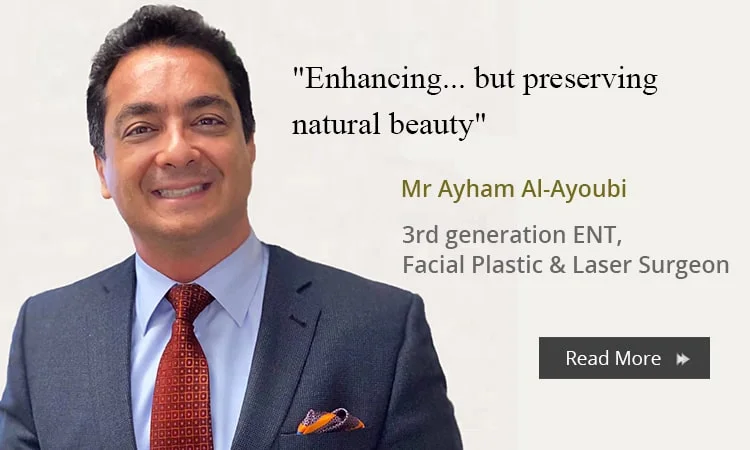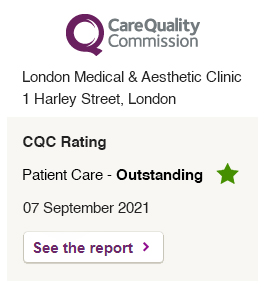Mesoesthetic Medical Peels for lightening intimate body areas
We are proud to introduce at our clinic the world’s leading depigmentation system by Mesoesthetic. Mesoesthetic’s award winning Cosmelan and Dermamelan treatment is the world’s leading professional pigmentation removal method and This treatment is an invigorating, multi-step treatment, which supports a patented, award winning technology in skin rejuvenation. The skin benefits in multiple ways as a result of receiving the treatment, as the treatment combines a painless chemical peel and the advanced Treatment is finished with an at home application of pioneering pigment reducing products. Regeneration of the skin is essential as it is the basis of radiant and healthy skin and the Dermamelan Method and The Cosmelan Method have been used worldwide to treat hyperpigmentation ranging from melasma, post inflammatory hyperpigmentation sun damage and even freckles. This treatment is suitable for all skin types and has an efficacy rate of over 95%
Causes of Hyperpigmentation
Skin hyperpigmentation is caused by an overproduction of melanin. This is the pigment responsible for the colour of the skin. There are also numerous internal and eccentric factors that also contribute to melanocyte overactivity including:
- Genetics • UV Exposure • Hormones • The ageing process • Inflammatory responses
- Chemical exposure
- Use of photo sensitizing medication
Dermamelan Treatment for intimate body lightening
With an intense brightening effect, Dermamelan suppresses the abnormal production of new dark spots keeping hyperpigmentation under control, there by achieving long term results.
The treatment contains a unique active blend of ingredients which will target all the types of hyperpigmentation. The in-clinic chemical peel works to eliminate pre existing pigment, controls the recurrence and stops the development of new dark areas of the skin.
The treatment process consists of only one treatment within clinic followed by a homecare maintenance plan advised by the professional, which is to be continued following the treatment.
The primary phase of the treatment is a professional treatment mask application which is administered by a skincare professional within clinic. This is then to be left on the indicated area for a time of among 8 – 12 hours differing on the patient’s Fitzpatrick type and the degree of hyperpigmentation severity. Following the procedure, the second phase cream should then be commenced by the client at home. The at home method of dermamelan maintenance cream is to enable the melanocytes to stop the production of the abnormal production of pigment and for the skin to continue to not generate this by itself. If this is not followed for this amount of time the medical professional advised the hyperpigmentation can re-occur as the same melanocyte starts to reproduce hyperpigmentation.
Cosmelan Treatment
The Cosmelan treatment contains an exclusive blend of active ingredients with established effectiveness in treating all types of hyperpigmentation successfully, totally removing pre-existing hyperpigmentation and preventing the emergence of new brown blemishes. The treatment process consists of only one treatment within clinic followed by a homecare maintenance plan advised by the professional, which is to be continued following the treatment.
The professional treatment mask is administered by a skincare professional in clinic and this is to remain on the skin for a period of between 8 – 12 hours depending on the clients Fitzpatrick skin type and degree of hyperpigmentation severity. The mask is to be rinsed at home by the patient. The second phase of the depigmenting process is started 48 hours post treatment which consists of a regimen of medical grade skincare. The homecare process of Cosmelan 2 maintenance cream is maintained to let the melanocyte stop production of the abnormal production of melanin. If this is not followed for this amount of time the medical professional advised the hyperpigmentation can re-occur as the same melanocyte starts to reproduce hyperpigmentation.
The skin is the largest organ of the human body and is constantly exposed to the sun, wind and other external elements can have an adverse impact on the skin over the years.
Chemical peels can correct and improve superficial skin conditions, some of the common outcomes are:
- Softening of Scars
- Correction of uneven pigment
- Reduction in wrinkles
- Removal of blemishes
- General improvement of skin texture
There are several chemical peel treatments that are meant to speed up the removal of old dead cells (desquamation) on the surface of the skin. They are meant to bring forward the softer and softer skin below. These chemical peels treatments are gentle in comparison to the laser resurfacing techniques. Also, they can be combined to give the best desire results and suitable for all skin photo types.
As we age, the process of skin cells dying, falling off and being replaced by new cells becomes a slower and more haphazard process. In addition, years of exposure to the sun can cause brown spots and premature aging. The result can be a dull, lifeless complexion. A chemical peel, or series of peels, can rejuvenate the skin.
A chemical peeling solution is utilized to exfoliate the top layers of skin which in turn allows the dead, dull surficial skin to peel off. This peeling process starts to lead to brand new cellular skin growth, which will be usually smoother, healthier, and an even skin tone compared to the old skin. Chemical peels should only be performed by professionals.
Chemical peels are essentially a quicker form of exfoliation which is induced by using chemical peeling products. There are different types of chemical peels which aim to remove pigmentation, reduce lines and wrinkles, and treat acne and scarring.
During the consultation at the London Medical & Aesthetic Clinic, our experienced skin and laser therapist will advise the patient on what specific types of chemical peel are most suitable to address the condition and how many chemical peel treatments are to be required.
The function of a chemical peel is to create an even, controlled shedding of several layers of damaged cells. This exposes a new fresh layer of skin with a more regular colour and a smoother texture. In addition, the peel stimulates new cells to grow, thereby tightening the skin, which decreases the appearance of fine lines and wrinkling .
A chemical peel also is used to stimulate the growth of new collagen in the skin layers. This is equivalent to adding new padding under a worn carpet. If the carpet (or skin) is thin, it easily wrinkles. Chemical peels when combined with other agents, promote thickening of the skin layers and reduction of the wrinkles and creases on the surface.
A Cosmelan and Dermamelan peel involves cleaning the skin and then applying the chemical mask to the required area. This is then left on the skin for a specific period advised by the professional and is to be removed at home.
The Cosmelan and Dermamelan Peels are one of the most innovative ways to rejuvenate the skin. When it is applied to the skin the top layers of skin cells are peeled off over several days. When the old skin has peeled off, it will expose a new layer of undamaged, brighter skin. This layer of skin has a more uniform colour and texture.
Mesoesthetic Medical and Aesthetic Chemical Peels
Mesoesthetic’s mesopeel® is the utmost advanced precise choice of treatment which is designed for professionals that require safe, effective, easy-to-use, and manageable products formulated to treat all stages of pigmentation, pre and advanced signs of each aging stages and aesthetic appearance concerns such as acne and its sequels, couperose, rosacea, stretch marks, scars on the body and other such blemishes. These unique peels are formulated with a precise combination of chemical exfoliants. This synergistic blend of ingredients allow professionals to treat practically the most specific skin concerns (hyperpigmented skin, acne, ageing, fine lines and wrinkles which in turn maximise the qualities of each specific agent to provide the most effective outcome.
At the same time as being an effective option for skin rejuvenation, acne outbreaks and pigmentations, chemical peels are a great solution to optimise and enhance other medical and aesthetic procedures (Sculptra, mesotherapy, Lanluma, botulinum toxin, Microneedling, PRP, iontophoresis, radiofrequency, C02 laser, laser, IPL…)
Glycolic acid is one of the most frequently used alpha-hydroxy acids (AHA), as it is extemely effective at regulating and reactivating the cellular synthesis regenerative processes.
Lactic acid is an alpha-hydroxy acid (AHA) that breaks protein bonds between cells, causing the detachment reducing the keratin rich stratum corneum (upper most layer of the skin) thickness. It stimulates the production of new collagen and glycosaminoglycans forming the dermal layer matrix. Lactic acid exerts a natural occurring moisturising impact on the skin as it attracts water molecules to top layer of the skin and creates stimulating ceramide synthesis, thus improving and modulating the barrier function. It is recommended for sensitive skin and décolleté areas, for its high tolerance by the skin, the molecular structure is larger than its Alpha hydroxy counterparts, so inflammation is less likely to occur.
Salicylic acid is a very effective beta-hydroxy acid (BHA) that exerts a powerful keratolytic, comedolytic, anti-inflammatory and anti-bacterial effect. It allows dissolution of the lipid cellular bonds, reducing corneum adhesion, and enhances reformation of superficial skin cells. Having an oil permeable nature, salicylic acid easily penetrates the pilosebaceous ducts, regulating sebaceous gland secretion.
Mandelic acid is an alpha-hydroxy acid (AHA) that acts breaking protein bonds between corneocytes, causing their detachment and exfoliation. Mandelic acid stimulates collagen and elastin synthesis promoting the process of cellular rejuvenation and exfoliation. Having a larger molecular size, its penetration is slower than that it’s alpha hydroxy counterparts, thus providing a much smoother, slowly progressive chemical exfoliation.
Azelaic acid is an ingredient that enhances the inhibition of hyperpigmentation, acting on overactive, irregular melanocytes and regulating the overproduction associated with it. Azelaic acid also can gradually reduce the colour of hyperpigmentation and reduces the size of the pigment. Resorcinol is a phenol derivative with skin smoothing and regenerating properties. It’s keratolytic properties mean it is the ideal choice for treating hyperpigmentation and brightening the skin. Phytic acid derived from copper and iron agents enhance the inhibition of the tyrosinase pigment producing enzyme and delivers a brightening effect whereby Tranexamic acid reduces the inflammation and vascular component of hyperpigmentation
Salicylic acid: Beta-hydroxy acid (BHA) that causes a powerful keratolytic and comedolytic effect; it has anti-inflammatory, anti-microbial, astringent, and antiaging properties.
Azelaic acid: Antibacterial and antiproliferative agent with anti-inflammatory and oil-regulating properties. Normalises the keratinisation process of the follicles. Salicylic acid: Beta-hydroxy acid (BHA) that causes a powerful keratolytic and comedolytic effect; it has anti-inflammatory, anti-microbial, astringent, and antiaging properties.
After the chemical peel the patient’s skin will be noticeably smoother and the complexion will be greatly improved. Chemical peel will produce dramatic improvement in the surface of the skin with less wrinkles, fewer blemishes, and even-toned skin. The results are long-lasting although not immune to aging and sun exposure.
Cleopatra and the ancient Romans used various food acids to peel their skin. In the early 1900s, women underwent ‘non-medical’ peels in salons with secret formulae, which were probably mild acids.
Chemical peels are basically an accelerated form of exfoliation induced using chemical peel products. There are different types of chemical peels which aim to remove pigmentation, reduce lines and wrinkles, and treat acne and scarring.
During the consultation our experienced staff will advise our patients on what types of chemical peel are most suitable to address their condition and how many chemical peel treatments are required.
The skin is the largest organ of the human body and is constantly exposed to the sun, wind and other external elements can have an adverse impact on the skin over the years.
Chemical peels can correct and improve superficial skin conditions, some of the common outcomes are softening of Scars, improving uneven areas of pigment, reducing fine lines and wrinkles and the general improvement of textural skin concerns.
There are several chemical peel treatments that are meant to accelerate the removal of old dead cells on the surface of the skin, thus transforming the aesthetic appearance of the skin. Chemical peels are designed to bring forth the softer and smoother skin below. These chemical peels treatments are gentle compared to the alternative laser resurfacing techniques. Also, they can be combined together within the same treatment protocols to give the most optimal desired results.
Some of the most commonly-used chemical peels solutions are:
- AHA – Alpha Hydroxy Acid Chemical Peel (e.g. glycolic)
- Salicylic acid Chemical Peel
·
Chemical Peels Suitability
Chemical peels are suitable for all skin types in both men and woman.
The best candidates are often those with fair, thin skin that has a tendency of fine wrinkling or scarring on the face. Some deeper chemical peels are usually not recommended for highly pigmented skin, such as those with Asian, black, and Mediterranean complexions however with the ground-breaking Cosmelan and Dermamelan treatments by Mesoesthetic professionals are now able to treat all skin Fitzpatrick types safely.
The following skin conditions can benefit from having a chemical peel:
Acne- chemical peel acne treatments exfoliate the skin and allow dead skin cells and excess oils to be removed more effectively. This action unblocks hair follicles and pores and reduces the appearance of pimples, improving the overall skin texture in people with acne.
Fine lines and wrinkles-chemical peels can reduce these, especially under the eye area and around the mouth in sun damaged or ageing skin.
Rough skin texture- chemical skin peels can improve rough skin texture by increasing the amount of collagen in the upper layer of the skin.
Lentigines (large freckles) which appear as dark spots on the skin, also called liver spots, or age spots- a course of chemical peels can lighten large freckles and improve the appearance of sun damaged skin.
Melasma- is a dark skin discoloration which appears as patches commonly found on the cheeks, nose, lips, upper lip, and forehead and is common in women who are taking hormonal treatment. A course of chemical peels can lighten the appearance of dark discoloured skin caused by melasma.
Hyperpigmentation- caused by excess skin pigment in the skin which can result in uneven skin tone. Chemical peels can lighten and even out the skin tone.
Superficial peels are suitable for ethnic skins. However, pigment changes can be caused by a chemical peel in people prone to this complication due to their skin type. People known to develop brown discolouration after injury such as a mild burn should have a test area peeled first before undergoing a full-face chemical peel.
Scaly patches and rough skin (keratoses) can be removed. Very thick keratoses may need additional treatment for complete removal. Skin that is thin and fragile e.g., sun-damaged skin, bald scalp skin, can be significantly rejuvenated.
Chemical peeling is not a substitute for a facelift. It does not tighten sagging skin or remove broken capillaries. Chemical peeling is not appropriate for people who will continue to have excessive sun exposure.
Chemical peels can be used on the full face or on specific regions, such as the forehead, around the eyes or mouth, the hands and chest.
Although one peel can significantly improve the appearance of the skin, some skin problems are deeper than others and may require a series of peels for best results.














































